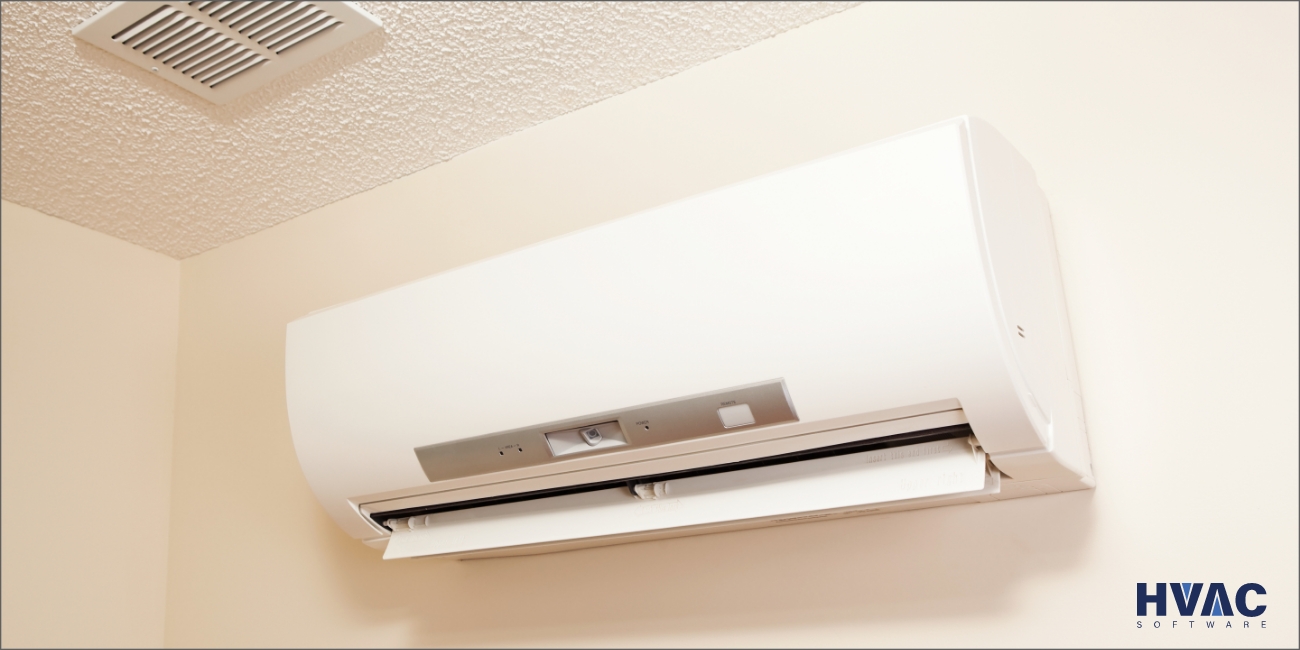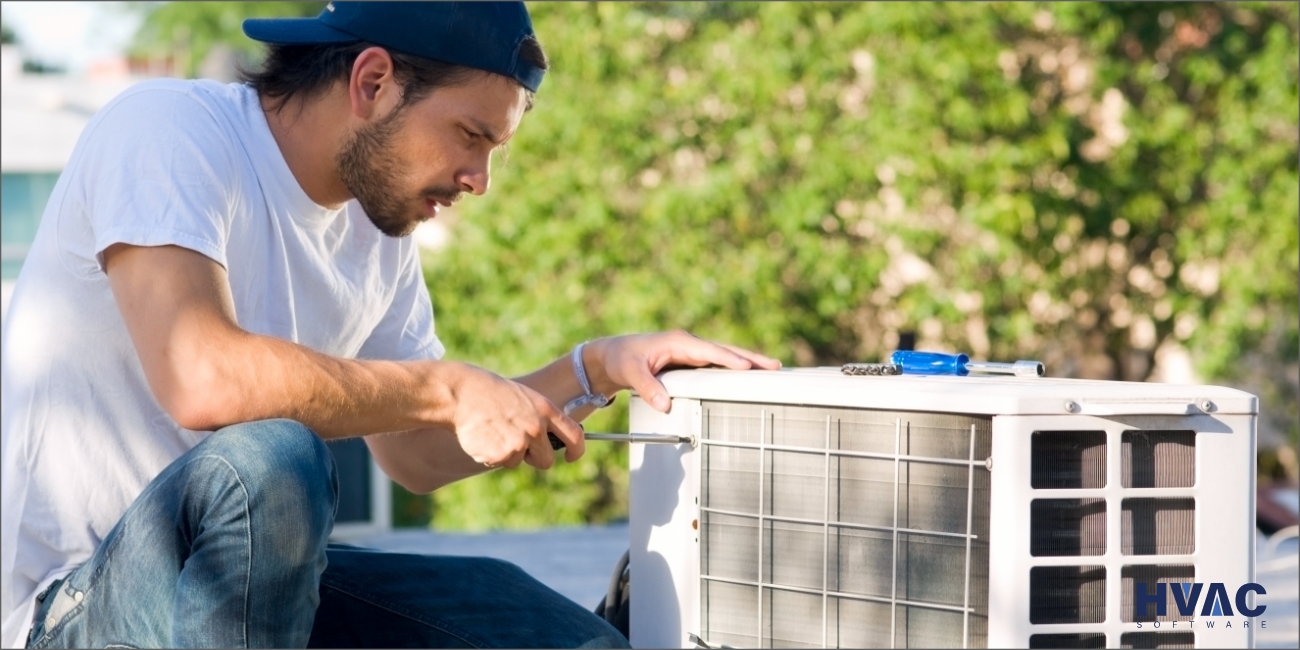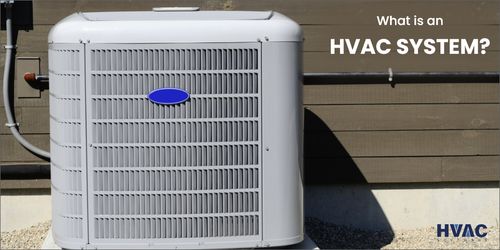People often claim that they know about HVAC systems and their working, but the actual fact is they are only the tip of the iceberg.
Infact according to a recent survey on residential HVAC system installation in houses, 87% of the people were unclear on the difference between ductless mini-split systems and standard split HVAC systems.
So, are you keen to learn everything about HVAC systems? Then this article has your back with a detailed explanation of what is an HVAC system, its types, and working.
Now let’s deep dive and learn about it.
Contents
What is an HVAC System?
HVAC is abbreviated as heating, ventilation, and air conditioning. An HVAC system combines equipment, technology, and processes in heating, cooling, and ventilating residential and commercial buildings.
In simple words, these systems help regulate the heated and cooled air throughout a building. Though you will find many options when it comes to HVAC systems, they all work similarly.
Take in the fresh air, using a mechanical ventilation system to cool or heat the air to the desired temperature and send it to various parts of a building.
How is the heating done?
Most houses will have a furnace heating their home. Heating equipment generally includes a blower motor that moves the heated air throughout the house.
In terms of cooling, the HVAC system includes an air conditioner or a heat pump. An air conditioner can only cool the air, whereas the heat pump can cool and heat the air for a house.
Now comes the next question, how does the heated or cooled air move inside the house? It’s via ductwork. The ductwork is designed to house and move the air-conditioned by the air conditioner or heated by the furnace.
So, for now, you have got a gist of what HVAC systems are. You need to know the different types of HVAC systems, how they work, and other things. So, keep reading.
Types of HVAC Systems
1. Heating and cooling split systems

If you search about HAVC systems, you most probably come across this type as it’s a dime a dozen. As the name says, this HVAC system is split into two separate HAVC units: one unit is placed inside the house and the other outside the house.
One serves the heating purpose while the other serves the cooling purpose. This split system setup consists of a furnace and air conditioner, a heat pump, and an air handler or a furnace and heat pump. However, the system configuration varies, largely depending on the type of home you live in.
2. Ductless mini-split
Sometimes, you may not need the entire house to be covered by the HVAC system. So ductless mini-split is designed to suit small spaces like garages and workshops that don’t demand the usual split system.
This type comes with an outdoor unit containing the compressor and condenser; an indoor air handler mounted in the room or where you intend to fit. And it blows the cooled air directly into the room. The advantage is these systems are easy to install, and the homeowner can do it without hassle.
3. Ducted mini-split
If the house has space constraints, traditional ductwork won’t fit. This is where ducted mini-split systems come to the rescue.
What makes the ducted mini-split different from the ductless model is that this system uses tubes instead of larger ducts to push air into a room from an outdoor compressor and condenser. Also, it provides better air circulation than the ductless mini-split.
4. Packaged HVAC system
If your house lacks a basement or a crawlspace, then you need to consider an HVAC packaged unit.
As the name implies, this packaged unit holds all parts of the HVAC system in one metal cabinet. The evaporator coil, condenser, and compressor are assembled together in the metal cabinet to save space.
This cabinet is either placed on the house or building’s ceiling or the cement slab outside the house.
5. Hybrid heat pump

As already mentioned, the heat pump can heat and cool the air, unlike air conditioning systems, which help only in cooling the air.
The central heating system includes a heat pump that works in conjunction with a furnace. The heat pump pushes hot air inside the house during spring and fall. Whereas during winters, the heat pump may not operate effectively when the weather is too cold.
So, during this time, the furnace takes charge. This hybrid system also called a dual-fuel system, saves your pocket as it costs less to heat the home using a heat pump than a furnace.
How Does an HVAC System Work?
Simply put, the main goal of the HVAC system is to move air. The whole system that comprises multiple pieces of HVAC equipment works together to move warm air elsewhere. Either into the house or outside.
The air conditioner, heat pump, and furnace help in capturing or creating heat air.
When the heated air is created, the next work is to send it to different parts of the house. So, here comes the blower motor and the ductwork. These both facilitate air movement.
Well, this is the overall working of the HVAC system. But now we shall take a look at how individually both the heating systems and cooling systems work in detail.
How does an HVAC system heat your house?
HVAC systems utilize a furnace and heat pump to heat the air.
The furnace generates heat through fossil fuel or electrical energy. At the same time, the heat pump sponges heat from the outdoor unit and sends it to the inside. Though the heat pump generates much heat, it works to transfer heat from one place to another.
How does an HVAC system cool your house?
Air conditioning systems create cold air. Did you also think the same?
Well, it’s myth-busting time then. Air conditioning units and heat pumps absorb heat from a house and move it to the outdoor unit where it’s vented outside. So, it doesn’t make cold air.
So, what makes this process happen? In the cooling system, the air conditioners consist of refrigerants. These refrigerants act as the main key to absorbing heat, where it absorbs heat and removes it at a different pressure.
How do the HVAC systems move air in your house?
The air is moved inside the house using ductworks. Ductworks are directly connected to your heating and cooling systems. And depending on the ventilation, the exits have to be added to the side of the house rather than the roof.
Factors That Affect The Cost of HVAC System
1. Location and temperature
The first factors to consider are location and temperature. Based on the temperature, only the HVAC system is installed in your house to maintain a normal temperature.
So, the climate and the region where you live are crucial to consider before deciding which HVAC system to install. Also, this factor impacts the installation costs.
2. House size and the construction type
It is obvious that a larger house requires a larger HVAC unit or an extra HVAC unit to make sure the house is comfortable and the indoor air quality is top-notch. So, the bigger the house size, the higher the cost.
If the HVAC system must be installed in a historic house, then it may require retrofitting for efficient heating and cooling, which impacts the cost.
3. Ductwork
Suppose the HVAC duct system is installed correctly and makes the space comfortable with heating and cooling. It also reduces energy costs. But installing new ductwork or replacing it can influence the HVAC system’s costs.
4. Add-on features
Some add-ons such as UV air purifiers or humidification systems help deliver clean, pollutant-free air inside the house. Though it incurs many benefits, it costs extra.
Five Different Ways to Choose the Right HVAC System
If you want a quick answer for “what is the best HVAC system,” the HVAC system with the below-given points can be called so.
1. It is important to have efficiency goals.
Energy efficiency must be given importance and ensure you hit a certain goal. If you are living in an area where the temperature soars high during summer, consider HVAC systems with high energy efficiency. Investing in an energy-efficient ratio will help save energy costs.
2. Check the maintenance requirements.
Maintenance is obvious if you want to prolong the HVAC system’s lifespan. When choosing the HVAC system, it is crucial to consider its maintenance requirements and follow them correctly.
Some HVAC systems require maintenance every six months, whereas some require yearly.
The professional technicians would provide:
- An annual tune-up
- Filter changes
- Check for any problems
- Improve energy efficiency
- Improve the air circulation
3. Unit Size
The next way to decide if you are choosing the right system is to check the unit size of the HVAC system. The right-sized HVAC system suffices the heating and cooling needs and saves your monthly energy bills during summer. Remember, both undersized HVAC and oversized HVAC systems cause problems. So, calculate the length and width of your house to estimate the square footage.
4. Design and specifications
While talking about the HVAC unit size, it is also essential to consider the house size before ordering the best HVAC system. Check if the house already has centralized ductwork and decide if there is space for installing new indoor and outdoor components.
5. Decide the type of HVAC system.
Not all HVAC system types would suit your house. However, packaged systems and split ductless AC are two common types used in houses.
Split ductless consists of two units, one inside and the other placed outside. This type is small, easy to install, safe, more flexible, and convenient for cooling and heating different rooms. However, this type is expensive and provides limited heat in winter.
Meanwhile, the packaged systems consist of an evaporator, condenser, and compressor placed in one cabinet on the roof. It benefits users with its well-spaced setting, and the installation is cheaper. However, it has limited energy efficiency.
When must you replace or repair your HVAC system?
Replace the HVAC heating and cooling system if
- It demands frequent repairs
- The energy bills rise up
- It delivers poor performance
Replace the air conditioner if
- It ages ten years
- It is rated 10 SEER or less
Buy a new furnace if
- It is over fifteen years old
- It is rated 80% AFUE or less
Invest in the heat pump if
- Its SEER rating is ten or less,
- Its age is over ten years
Frequently Asked Questions
What are some of the technological advancements in the HVAC market?
The HVAC market is blooming with smart technology, and fully automated homes are becoming a reality now. So, HVAC units can be connected to other smart appliances in the home and operate according to climate changes. The implementation of IoT with HVAC systems has fueled their demand in both residential and commercial applications and is expected to grow at a CAGR of 6.6% before 2026.
What does an HVAC system do?
The main work of the HVAC system is to circulate air. These systems are designed to move air and heat or cool the indoor space in the process.
How are HVAC and air conditioning different?
Many tend to use air conditioning and HVAC interchangeably, which is wrong. The HVAC system consists of a set of components that work together to regulate the temperature and ventilation in the building.
Whereas air conditioning simply cools the building. So, an air conditioner falls under the HVAC umbrella but not all HVAC systems will have an air conditioner.
Conclusion
Though most house owners know what the HVAC abbreviation stands for and the basic idea of how the system works, very few people understand the actual working of the system.
Now that you have read the complete HVAC article, you must clearly understand what an HVAC system is, the different types of HVAC systems, it’s working, and the factors that affect the costs and other things.

